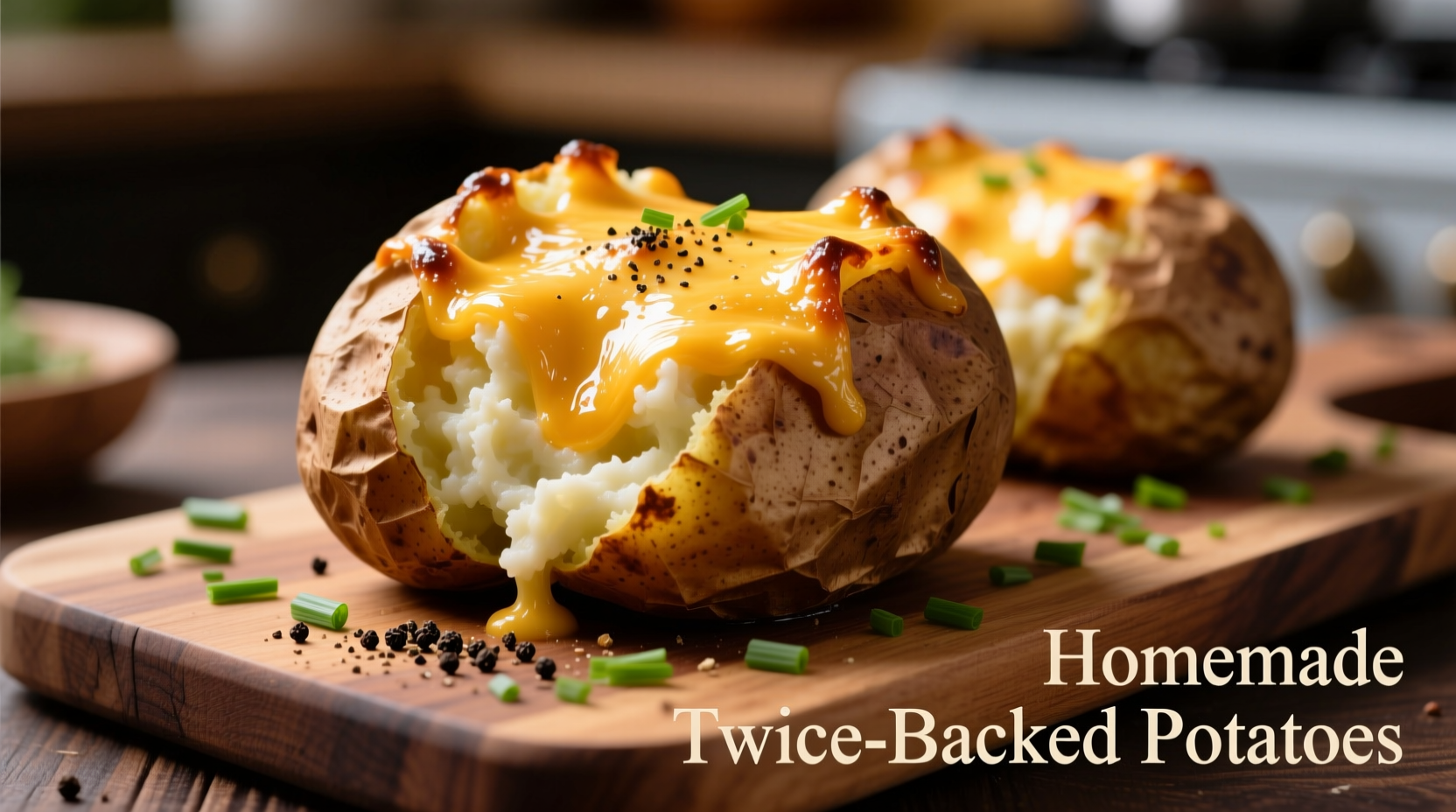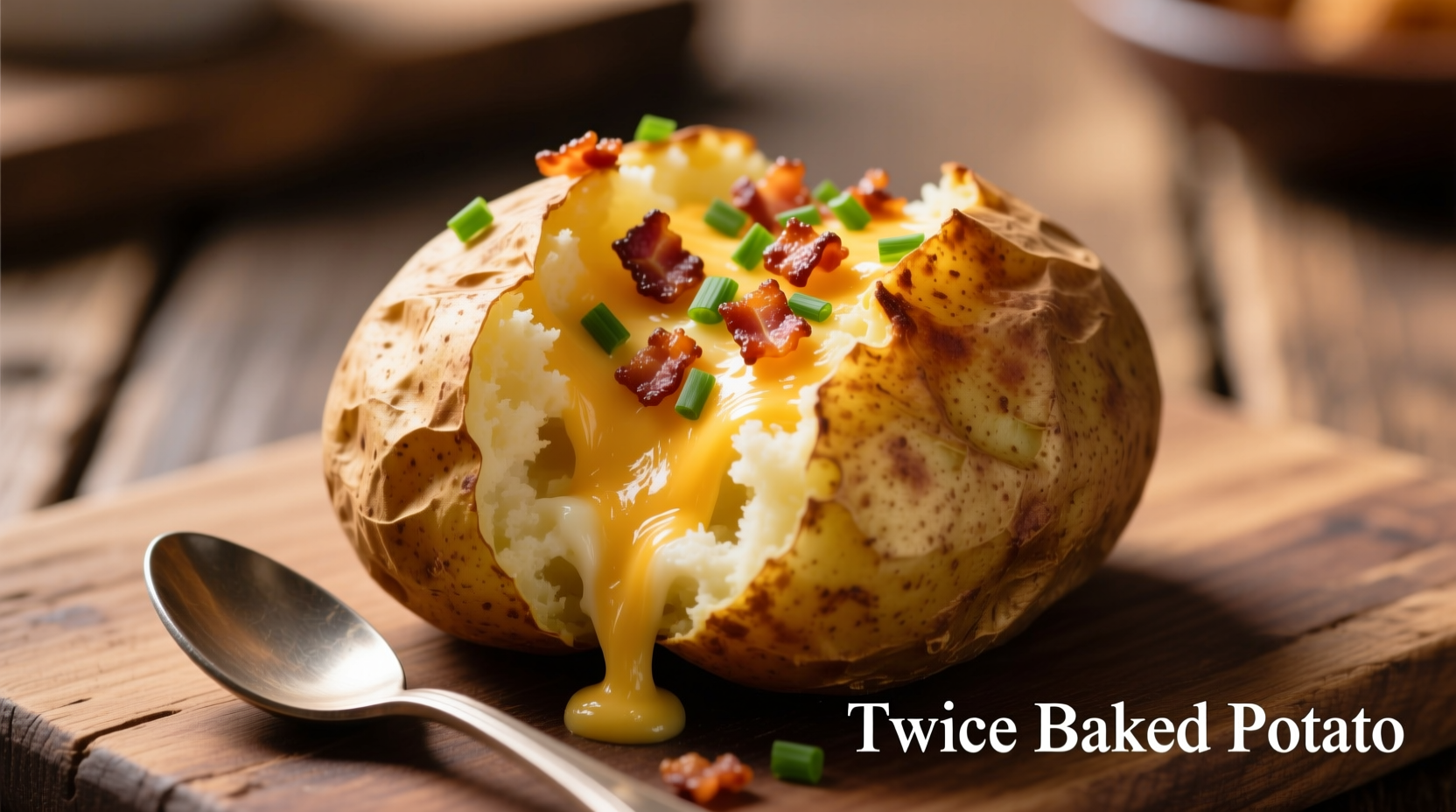Twice baked potatoes represent the perfect marriage of simplicity and sophistication in American comfort food. Unlike standard baked potatoes that go straight from oven to plate, this preparation undergoes a two-stage baking process that elevates both texture and flavor profile. The technique allows home cooks and professional chefs alike to transform a humble spud into a show-stopping side dish that consistently appears at holiday feasts, steakhouse menus, and family dinners across North America.
The Evolution of Twice Baked Potatoes
While potatoes have been a staple food since their introduction to Europe from South America in the 16th century, the specific technique of twice baking emerged much later. Historical culinary records show that the concept gained popularity in American cookbooks during the mid-20th century, coinciding with the widespread adoption of home ovens that could maintain consistent temperatures for multiple baking cycles. The Michigan State University Digital Repository of historic cookbooks documents early references to "deviled potatoes" in the 1930s, which evolved into the modern twice baked preparation we know today.
| Preparation Method | Texture Profile | Flavor Complexity | Typical Serving Style |
|---|---|---|---|
| Regular Baked Potato | Firm interior, crisp skin | Simple potato flavor | Individual portion with toppings added tableside |
| Twice Baked Potato | Creamy interior, golden crispy top | Layered flavors from added ingredients | Pre-filled and presented as complete dish |
Why "Twice" Baked? Understanding the Process
The "twice" in twice baked potatoes refers to the two distinct baking phases that define this preparation method. The first bake fully cooks the potato while maintaining its structural integrity. After cooling slightly, the potato is halved and the flesh carefully scooped out, leaving the skin intact. This scooped potato then gets mixed with various ingredients before being returned to the skins for that crucial second bake.
This dual-bake technique serves multiple culinary purposes:
- Ensures complete cooking of the potato interior during first bake
- Allows thorough incorporation of additional ingredients without compromising structure
- Creates textural contrast between creamy filling and crispy topping
- Develops deeper flavor complexity through caramelization during second bake
Mastering the Twice Baked Technique: Step-by-Step
Creating perfect twice baked potatoes requires attention to detail at each stage. Professional chefs and home cooks follow these essential steps to achieve optimal results:
- Selection: Choose russet potatoes for their high starch content and thick skins that hold up well to double baking
- First Bake: Bake at 400°F (200°C) until fully cooked through (about 45-60 minutes depending on size)
- Cooling: Allow potatoes to cool just enough to handle safely (10-15 minutes)
- Scooping: Cut potatoes in half lengthwise and carefully scoop out flesh, leaving 1/4-inch shell
- Filling Preparation: Mash potato flesh with chosen ingredients until smooth and creamy
- Second Bake: Return mixture to skins and bake at 375°F (190°C) for 15-20 minutes until golden and heated through

Popular Variations and Customizations
One reason twice baked potatoes have maintained popularity for decades is their incredible versatility. The basic technique serves as a canvas for endless creative variations that cater to different tastes and dietary preferences:
Classic Cheese and Bacon: The most popular variation combines sharp cheddar cheese, crispy bacon bits, and green onions with the mashed potato base. The second bake melts the cheese into a golden crust while crisping the bacon for textural contrast.
Loaded Baked Potato Style: Taking inspiration from steakhouse favorites, this version includes sour cream, chives, and additional bacon for a richer flavor profile that mimics the beloved restaurant side dish.
Vegetarian Options: Roasted garlic, caramelized onions, and herb-infused olive oil create sophisticated flavor combinations without animal products. Some variations incorporate pureed roasted vegetables like cauliflower or butternut squash for added nutrition.
Dietary Adaptations:
- Lower calorie: Substitute Greek yogurt for sour cream and reduce cheese quantity
- Dairy-free: Use plant-based cheese alternatives and coconut milk
- Gluten-free: Naturally gluten-free when prepared without flour-based thickeners
When Twice Baked Potatoes Shine (and When They Don't)
Understanding the appropriate context for serving twice baked potatoes helps maximize their culinary impact. This preparation method excels in specific situations while presenting limitations in others:
Ideal Applications:
- Holiday meals where make-ahead dishes are valuable
- Steakhouse-style dinners as a premium side dish
- Potluck gatherings where presentation matters
- Cold weather months when hearty comfort foods are preferred
Practical Limitations:
- Less suitable for quick weeknight meals due to time requirements
- Not ideal for extremely casual dining situations
- Portion control can be challenging with rich preparations
- Requires oven access for both baking stages
Pro Tips for Perfect Twice Baked Potatoes Every Time
Professional chefs employ several techniques to ensure consistently excellent twice baked potatoes. Incorporate these expert tips to elevate your preparation:
- Temperature control: Don't rush the cooling process after first bake - potatoes that are too hot will make the filling gluey when mixed
- Moisture management: Reserve potato cooking liquid or use warm milk instead of cold to maintain proper consistency
- Flavor layering: Sauté aromatics like onions or garlic before incorporating them for deeper flavor development
- Texture enhancement: Rough up the potato skins slightly with a fork before first bake to create more surface area for crispiness
- Make-ahead advantage: Complete preparation through filling stage, then refrigerate for up to 24 hours before final bake
Common Mistakes to Avoid
Even experienced cooks occasionally stumble when preparing twice baked potatoes. Watch out for these common pitfalls:
- Overmixing: Vigorous mashing incorporates too much starch, creating a gummy texture
- Underseasoning: Potatoes require generous seasoning - don't forget to salt both the cooking water and the filling
- Skin compromise: Removing too much potato flesh weakens the structural integrity of the shell
- Rushed baking: Insufficient first bake leaves undercooked centers, while inadequate second bake prevents proper browning
- Ingredient overload: Too many mix-ins can overwhelm the potato flavor and affect texture











 浙公网安备
33010002000092号
浙公网安备
33010002000092号 浙B2-20120091-4
浙B2-20120091-4